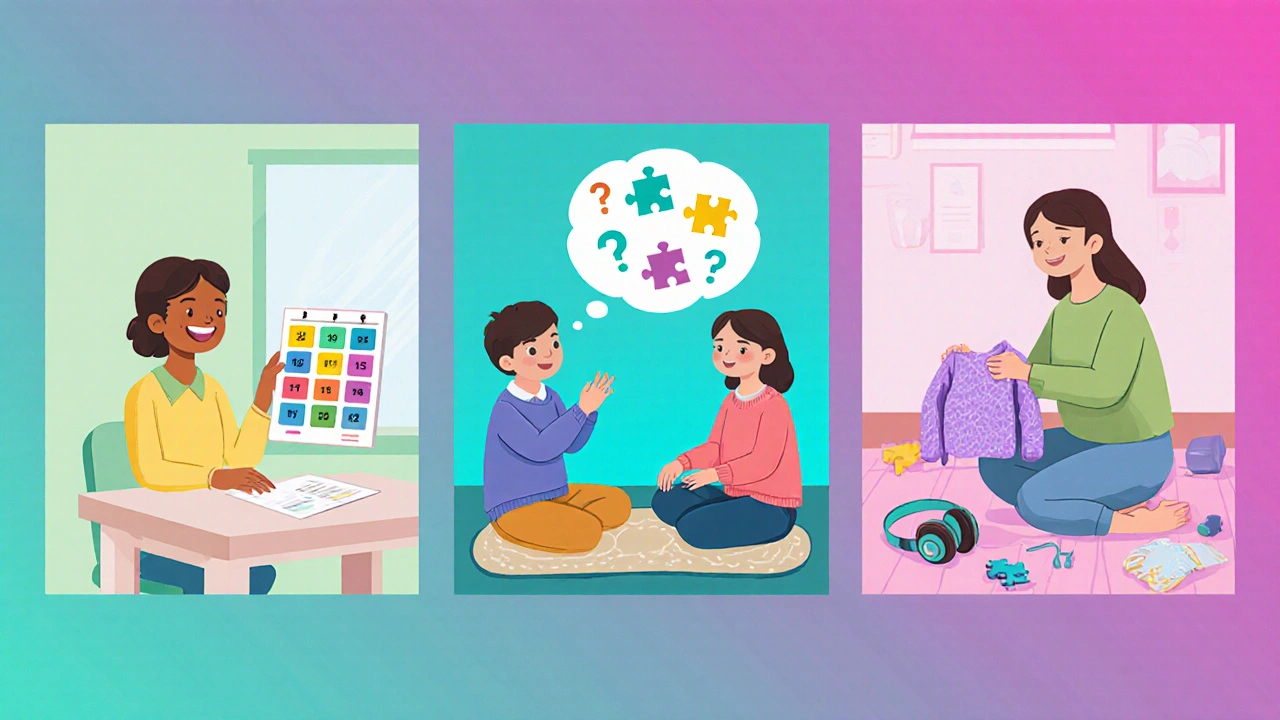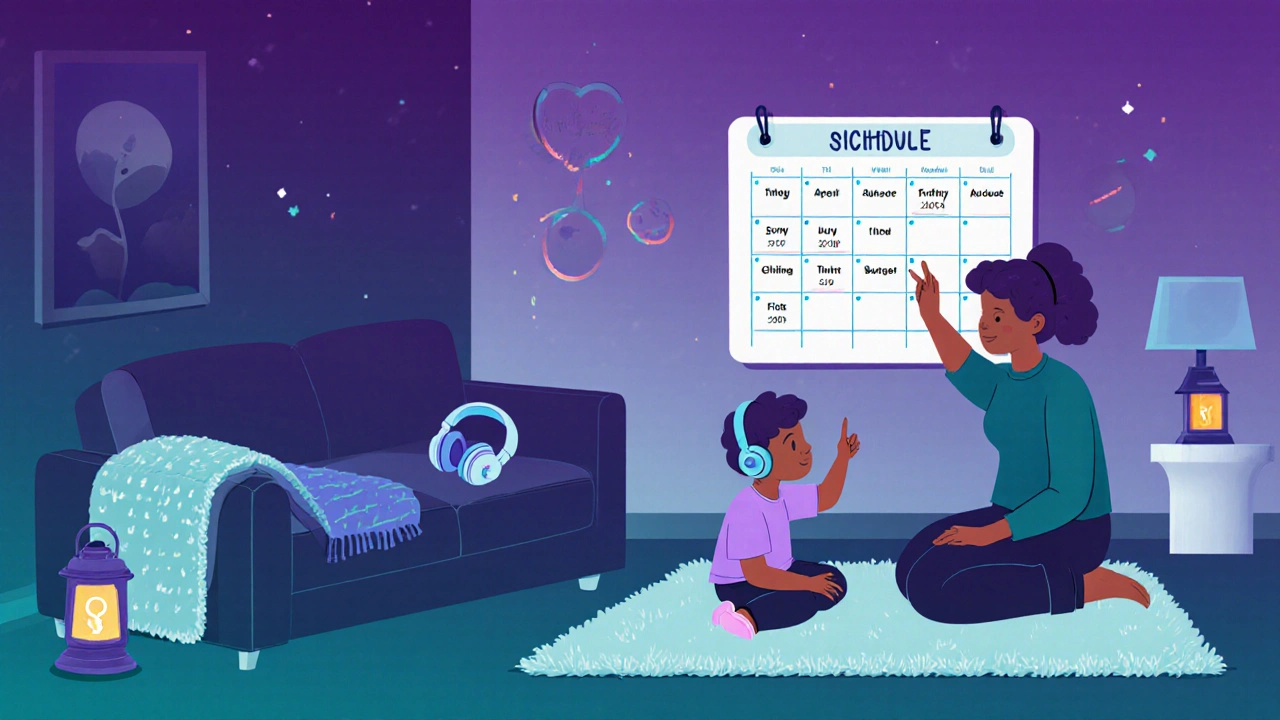Finding a parenting style that supports a child on the autism spectrum can feel like walking a tightrope-balance, flexibility, and a clear sense of direction are key. This guide walks you through the main styles, shows how each can be tweaked for autism, and gives real‑world tools you can start using today.
What Is Autism?
When you first hear the word Autism is a neurodevelopmental condition that affects social communication, sensory processing, and behavior. It appears early in childhood and varies widely from person to person, meaning no two autistic children are exactly alike. In Australia, the Autism Spectrum Disorder (ASD) prevalence is about 1 in 70 children, according to the Australian Institute of Health and Welfare (2024). Understanding these core features helps you see why a one‑size‑fits‑all parenting approach often falls short.
Why Parenting Style Matters for Autistic Children
Research from the Journal of Autism and Developmental Disorders (2023) shows that children whose parents use a consistent, supportive style tend to develop stronger communication skills and fewer anxiety‑related behaviors. The right style can turn daily challenges-like sensory overload or difficulty with transitions-into teachable moments rather than battles.
Classic Parenting Styles at a Glance
Before we dive into autism‑specific tweaks, let’s review the four classic styles that psychologists use to categorize most parenting approaches.
| Style | Key Traits | Typical Outcomes |
|---|---|---|
| Authoritative | Warmth + clear expectations | High self‑esteem, good social skills |
| Authoritarian | Strict rules, low warmth | Compliance, but higher anxiety |
| Permissive | High warmth, few limits | Creativity, but impulsivity |
| Uninvolved | Low warmth, low control | Poor academic & social outcomes |
Adapting Parenting Styles for Autism
Each classic style can be reshaped with autism‑friendly strategies. Below are practical adaptations for the three most effective approaches-authoritative, collaborative, and positive discipline.
Authoritative + Structure
Authoritative parents already blend love with clear limits. For autistic children, add Structure and Routine-a predictable daily schedule that reduces surprise and sensory stress. Visual schedules, timers, and consistent bedtime rituals become the backbone of this style.
Collaborative Problem Solving (CPS)
Rooted in Collaborative Problem Solving-a method developed by Dr. Ross Greene-CPS treats challenging behavior as a skill deficit rather than willful defiance. Parents ask three questions: What’s the concern?, What do you want?, and What do I want? Together they brainstorm solutions that respect the child’s needs.
Positive Discipline + Sensory Awareness
Positive Discipline focuses on teaching rather than punishing. Pair it with an understanding of Sensory Processing issues. If a toddler throws a tantrum because a sweater feels itchy, the response is to replace the garment and explain the feeling, not to scold.

Evidence‑Based Tools to Support Any Style
- Applied Behavior Analysis (ABA): Data‑driven technique that breaks skills into tiny steps and reinforces success. Works well with both authoritative and positive‑discipline approaches.
- Visual Supports-picture cards, social stories, and schedule charts help autistic children process information quickly and reduce anxiety.
- Social Stories provide short narratives that describe a situation, the expected behavior, and the emotional outcome. They are especially useful during transitions.
Practical Strategies for Everyday Life
- Set Up Predictable Routines: Use a visual timetable for morning, meal, and bedtime sequences. Highlight any changes in bright colors.
- Offer Choices Within Limits: Instead of “Do you want to wear the red shirt or the blue shirt?”, ask “Do you want the red shirt or the green one?” This gives control while keeping expectations clear.
- Use Calm‑Down Zones: Create a low‑stimulus corner with weighted blankets, noise‑cancelling headphones, and dim lighting for moments of overload.
- Practice “First‑Then” Language: Phrase instructions as “First finish your vegetables, then we can play with the trucks.” It aligns with the child’s need for sequence.
- Document Triggers: Keep a simple log of situations that lead to meltdowns. Patterns often reveal sensory or communication gaps you can address.
Common Pitfalls and How to Avoid Them
Even well‑meaning parents slip into counterproductive habits.
- Over‑Structuring: Too rigid a schedule can backfire. Allow flexibility for spontaneous play or preferred interests.
- Ignoring Sensory Needs: Dismissing “I don’t like that noise” can increase anxiety. Validate the feeling and adjust the environment when possible.
- One‑Size‑Fits‑All Discipline: Every autistic child has a unique trigger set. Tailor consequences to the individual rather than using a universal rule.
- Skipping Collaboration: Skipping the child’s input in problem‑solving removes their sense of agency. Even a simple “Do you want a break?” makes a big difference.

Quick Checklist for Parents
- ✅ Have a visual daily schedule displayed.
- ✅ Use “first‑then” language for instructions.
- ✅ Create a calm‑down zone with sensory‑friendly items.
- ✅ Log triggers and adjust routines accordingly.
- ✅ Involve your child in problem‑solving discussions.
Resources You Might Find Helpful
- National Autistic Society (UK) - Parenting guides and webinars.
- Autism CRC (Australia) - Free toolkits on visual supports and sensory diets.
- “The Whole-Brain Child” by Siegel & Bryson - Practical tips on collaborative discipline.
- Local support groups - Connect with other families for shared experiences.
Frequently Asked Questions
Can an authoritarian style ever work for an autistic child?
Pure authoritarian parenting-high control, low warmth-tends to raise anxiety in autistic children, who already experience heightened stress. However, when combined with clear visual cues and predictable routines, some elements of firmness can be useful for safety. The key is to balance strictness with empathy and clear explanations.
How often should I revise my child’s visual schedule?
Review it weekly or whenever you notice a new trigger or interest. Small adjustments keep the schedule relevant and prevent it from becoming a rigid script.
Is ABA compatible with a collaborative problem‑solving approach?
Yes. ABA provides data‑driven skill building, while CPS adds the child’s perspective to problem‑solving. Using both can lead to faster skill acquisition and better emotional regulation.
What’s a good way to handle meltdowns in public?
First, move to a quieter spot if possible. Offer a sensory tool (e.g., headphones). Use brief, calm language: “I see you’re upset. Let’s take a breath together.” Then, once calm, discuss the trigger later.
Should I involve my child’s school in my parenting strategy?
Absolutely. Consistency across home and school improves skill generalisation. Share your visual schedule, sensory accommodations, and preferred communication methods with teachers.







Nhasala Joshi
October 18, 2025 AT 19:19